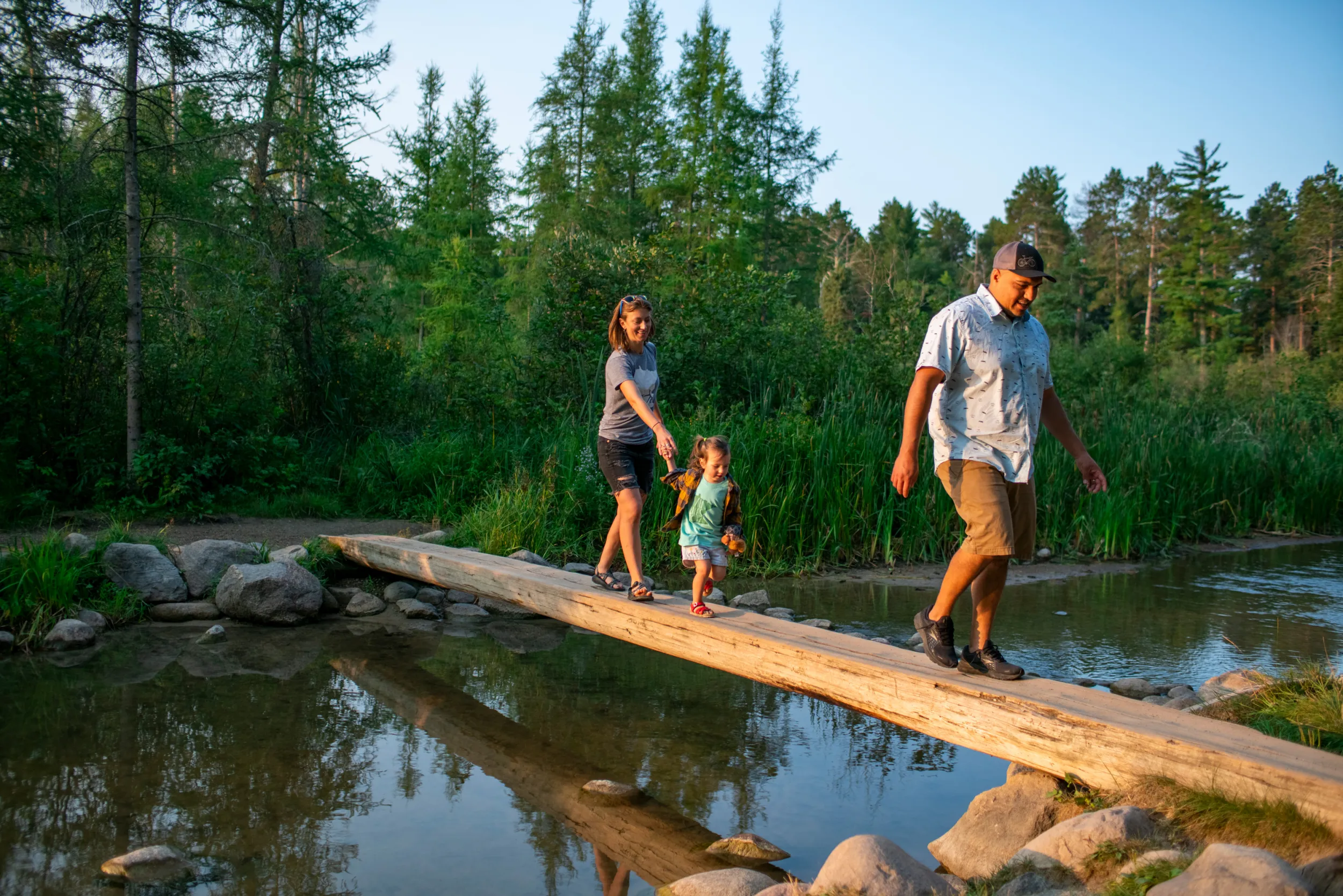How to Visit Itasca State Park
Over 500,000 people visit Itasca State Park every year to dip their feet into the headwaters of the mighty Mississippi River. Also known as the Great River, it flows north and east through Minnesota’s Northwoods before heading south across the continent on a 2,552-mile journey to the Gulf of Mexico. Combined with the Missouri River, the Mississippi ranks as the longest river system in North America and the fourth-longest river in the world.
Many visitors can’t resist claiming “I walked across the Mississippi!” as they carefully cross a line of boulders between the lake and stream. On hot summer days, toddlers and kids wade into the shallow warm water with parents or cross a plank bridge.
Above them, breezes whoosh through old-growth white and red pines. The fierce effort to protect those trees led to Itasca becoming Minnesota’s first state park in 1891. The park comprises more than 100 lakes, a scientific and natural area, and more than 32,000 acres.
While the Mississippi River’s birthplace draws first-time visitors, it’s the pines, trails and vast areas to explore that keep bringing them back, making Itasca one of the top five most-visited state parks.
How to Get Here
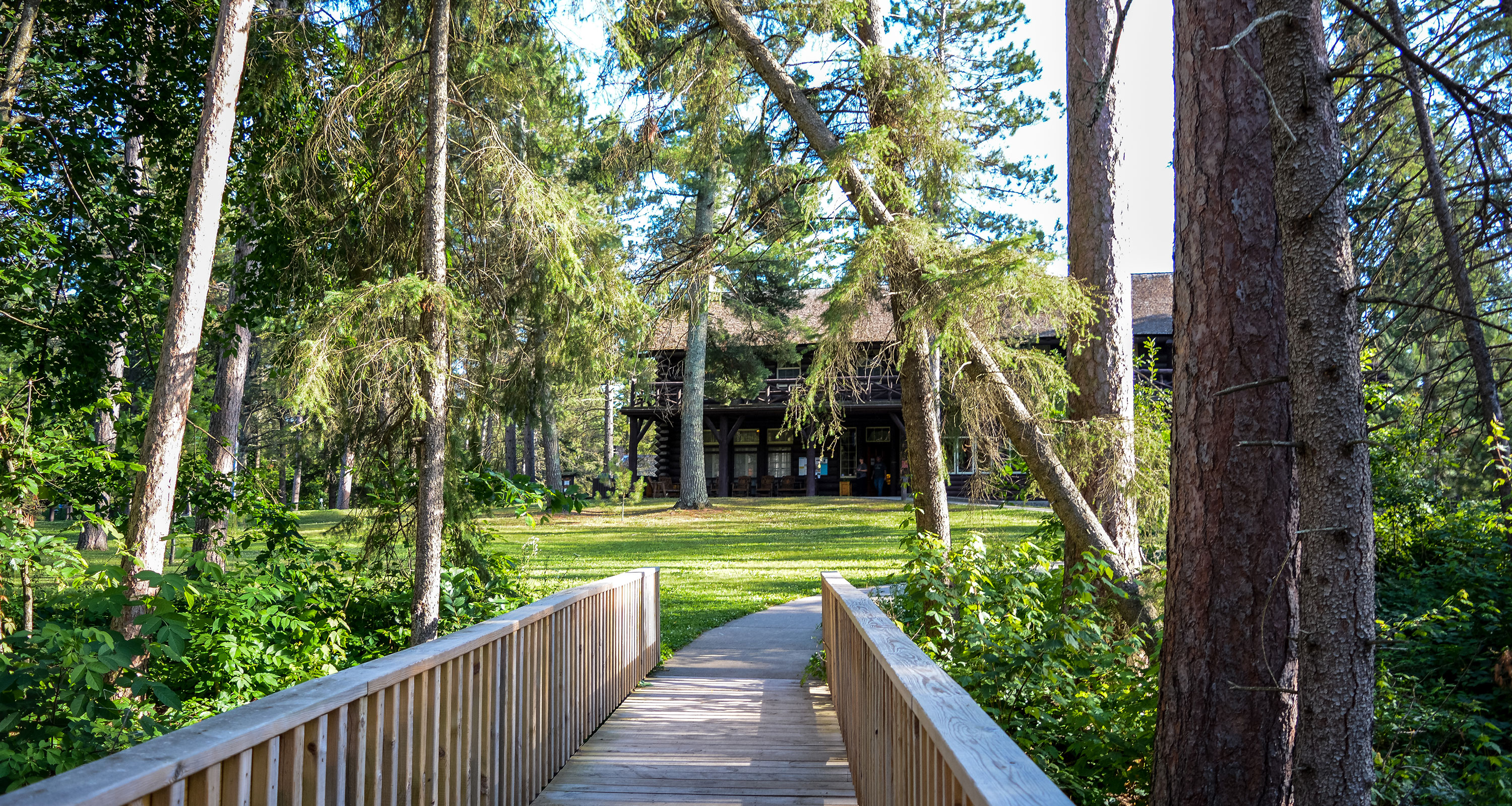
The park is about four hours north of Minneapolis-St. Paul International Airport, three hours west of Duluth, just under two hours east of Fargo, or 35 miles south of Bemidji.
Use the east entrance off U.S. Hwy. 71 to reach the Jacob V. Brower Visitor Center, Douglas Lodge, and most park accommodations. The north entrance off Hwy. 200 is fastest for the Mary Gibbs Headwaters Center and campgrounds.
What's on the Way

Coming from the Twin Cities? Stop at Clearwater Travel Plaza for fried bread French toast and massive doughnuts. Northbound on Hwy. 10 and 371? Visit Brainerd-Baxter or Nisswa.
Driving on I-94 and U.S. Hwy. 71? Good stops include Wadena (try Oma’s Bread) and Park Rapids, the nostalgic gateway to Itasca.
Where to Stay
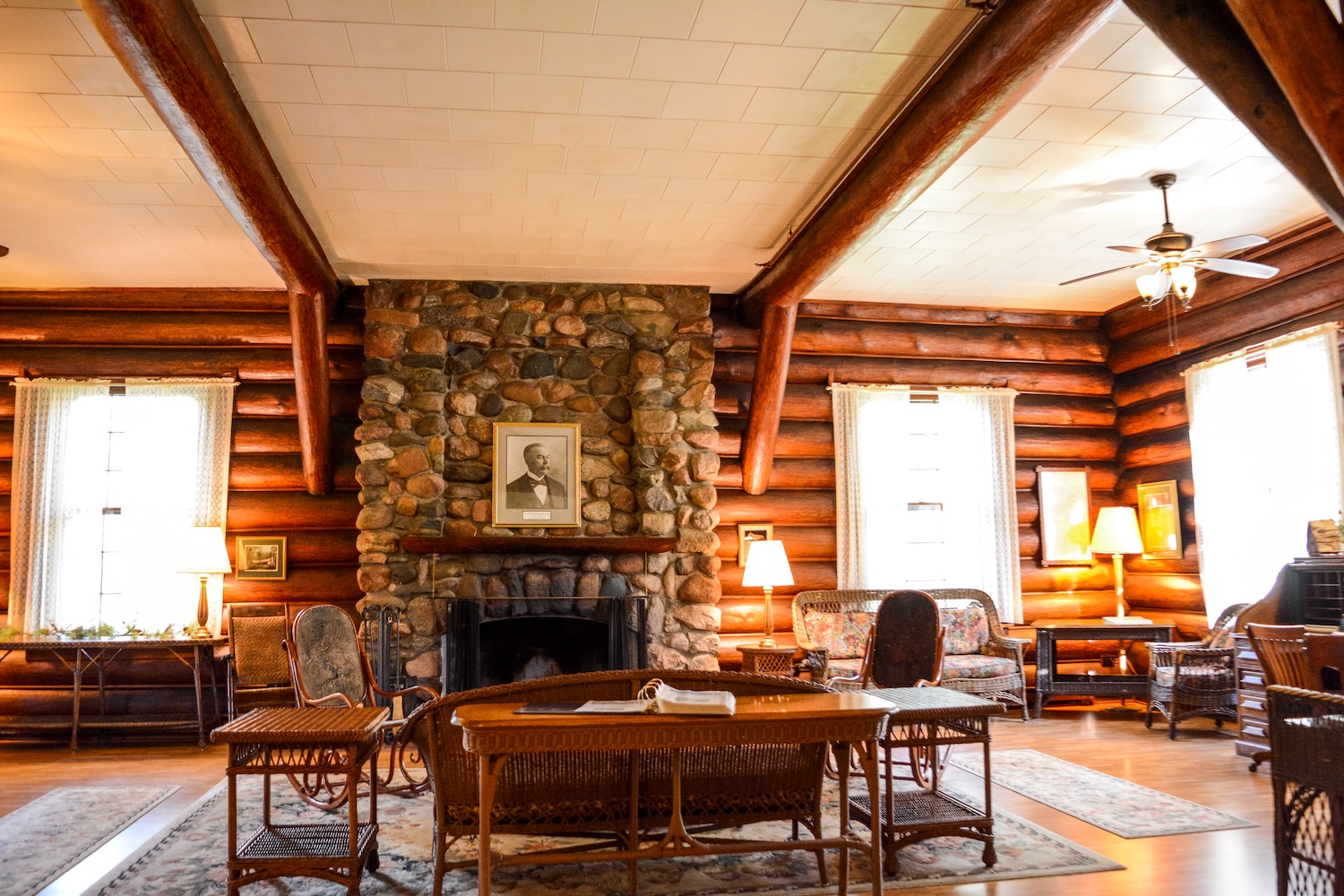
Choose from a variety of lodging styles. The Four-Seasons Suites are open year-round. Douglas Lodge offers seasonal rooms and a restaurant with regional dishes.
The 1938 Douglas Lodge fourplex adds more historic rooms, while Headwaters Inn has six rooms with shared baths and a full kitchen.
Douglas Lodge Cabins feature 12 rustic log cabins. Additional options include Bear Paw Cabins, Bert’s Cabins with kitchens, and guest houses.
Where to Camp

Itasca offers 223 drive-in sites (160 with electricity), plus backpack and group campsites. First-come, first-served camping is also available at Huntersville, Two Inlets, and Paul Bunyan State Forests.
How to Get Oriented
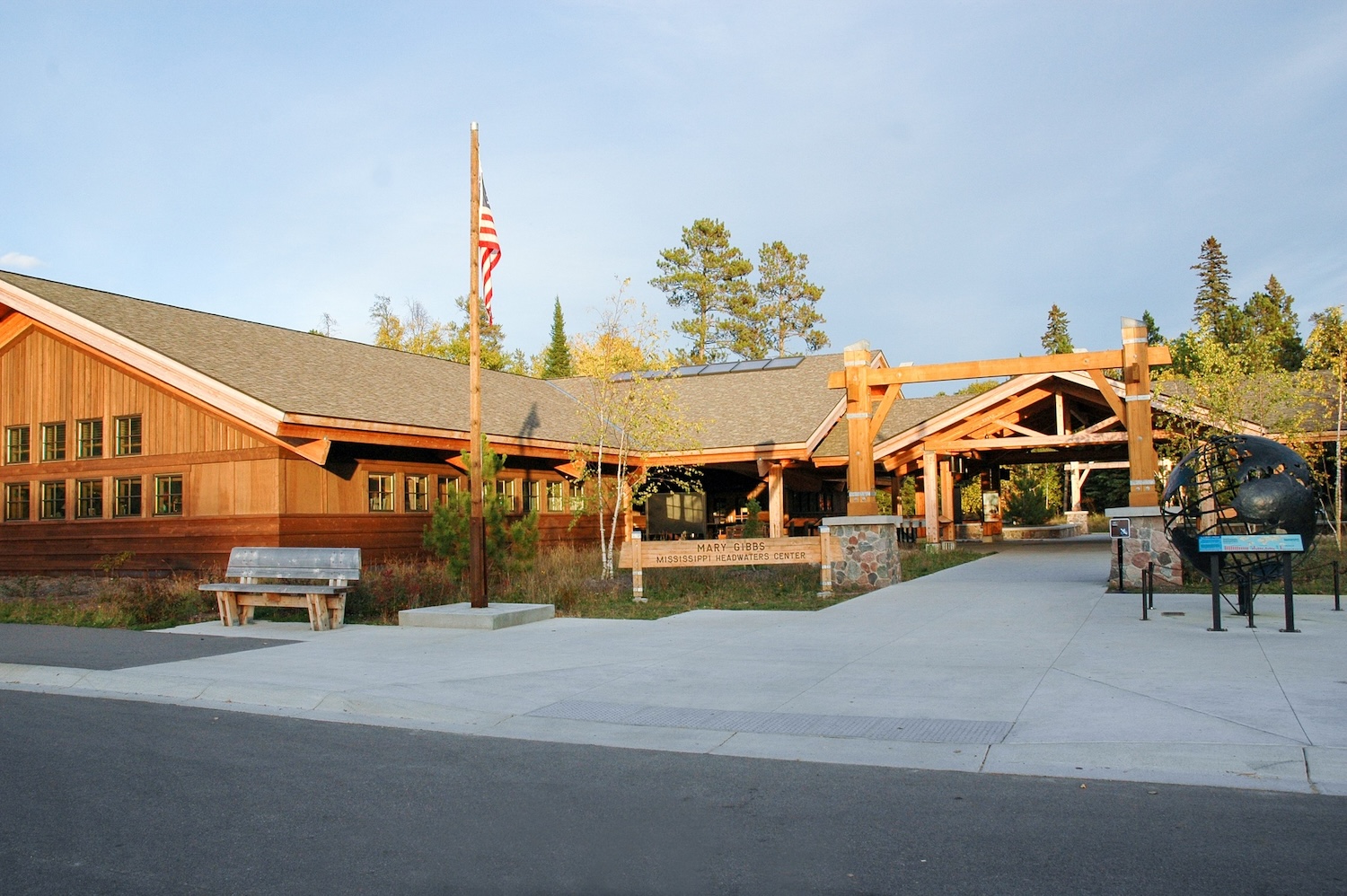
Learn about the Mississippi’s wildest stretches at the Mary Gibbs Headwaters Center. It features maps, cultural exhibits, and a seasonal café. Mary Gibbs was the nation’s first female park commissioner.
The Jacob B. Brower Visitor Center offers exhibits, a gift shop, and rangers to help you plan your visit.
Things to Do
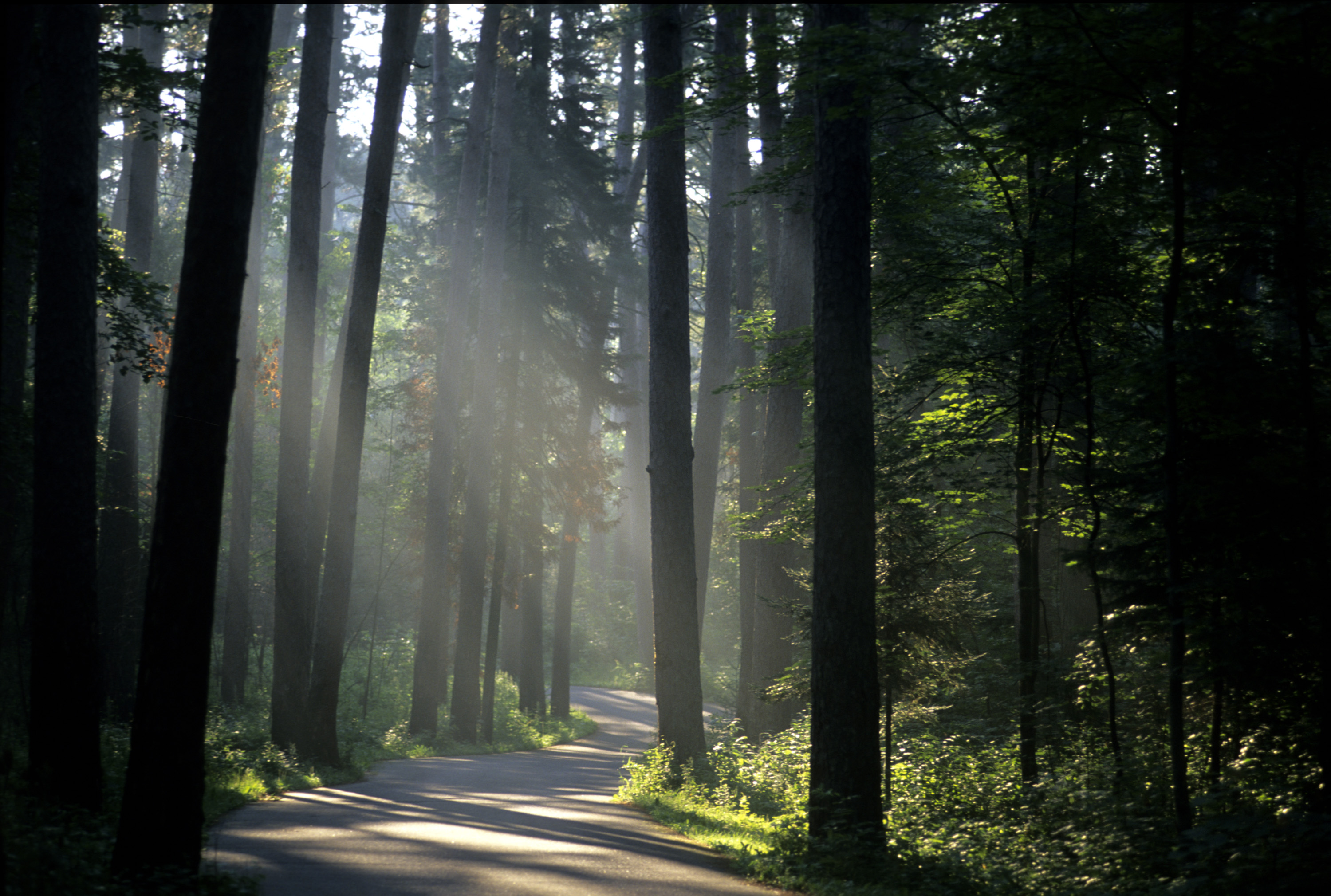
Take the Scenic Route
The 10-mile Wilderness Drive winds through forest and lakes. Climb the 100-foot 1920s Aiton Heights fire tower for sweeping views.
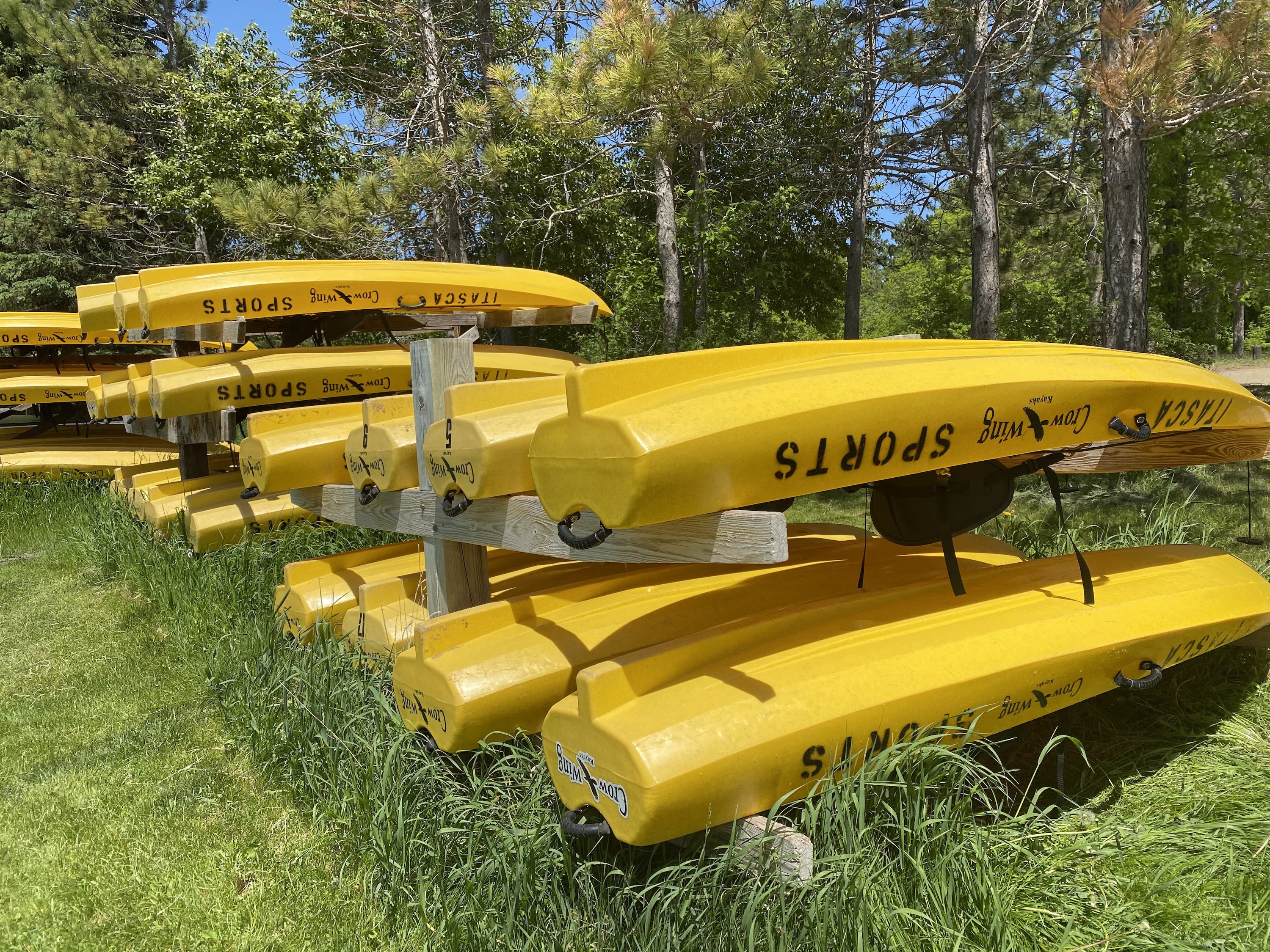
Pedal or Paddle
Rent a kayak, canoe, paddleboard or pontoon on Lake Itasca. Itasca Sports also offers bikes and e-bikes for scenic rides.
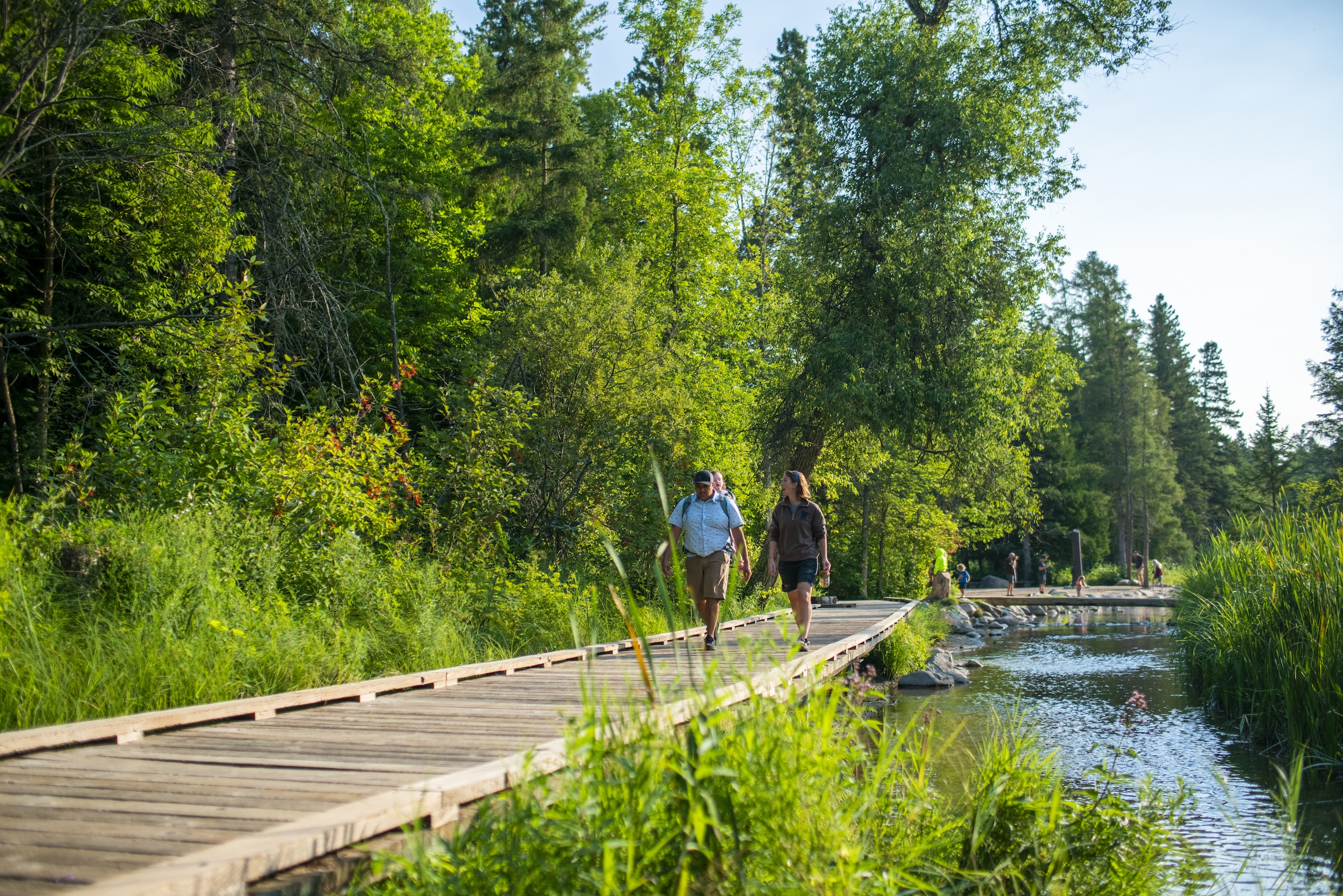
Take a Hike
Enjoy 28+ miles of trails through lakes, bogs, and pine forest. Look for deer, bears, and otters. Try Brower Trail (2.2 mi) or the Hiking Club Trail (3.9 mi).
Accessible options include Headwaters Loop, Dr. Roberts Trail (1.7 mi), and trails near the visitor center. Reserve an all-terrain electric chair for rugged paths.

Or a Detour
Itasca sits near four major long-distance trails:
- Mississippi River Trail – 620 miles from Itasca to Iowa
- Paul Bunyan State Trail – 115 miles of paved trail
- Heartland Trail – scenic multi-use trail linking Park Rapids and Cass Lake
- North Country National Scenic Trail – 850+ miles across Minnesota

Catch a Concert
Attend weekend “Under the Pines” concerts and naturalist-led events. Kids can complete a Junior Ranger booklet to earn a patch.
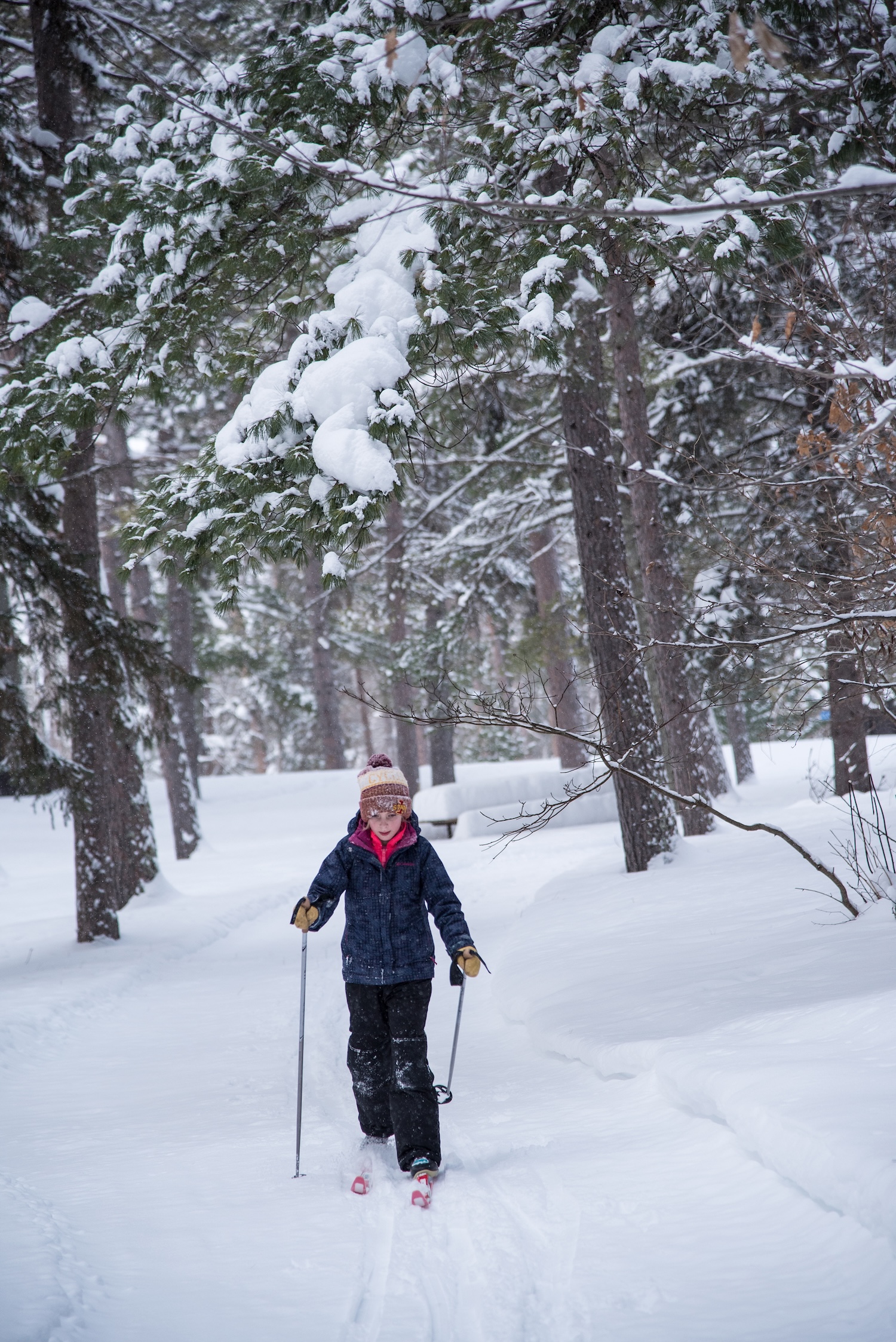
Ski or Snowshoe
Rent skis and snowshoes at Forest Inn or the visitor center. Try Dr. Roberts, Brower, and Schoolcraft trails. Beginners can ski to Preachers Grove.
Call the park for rental hours. Check trail conditions on dnr.state.mn.us. Walk, ski or snowshoe the lit Twinkle Light Trail near Bear Paw Campground.
Find out more about the Mississippi Headwaters.
